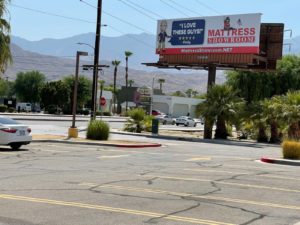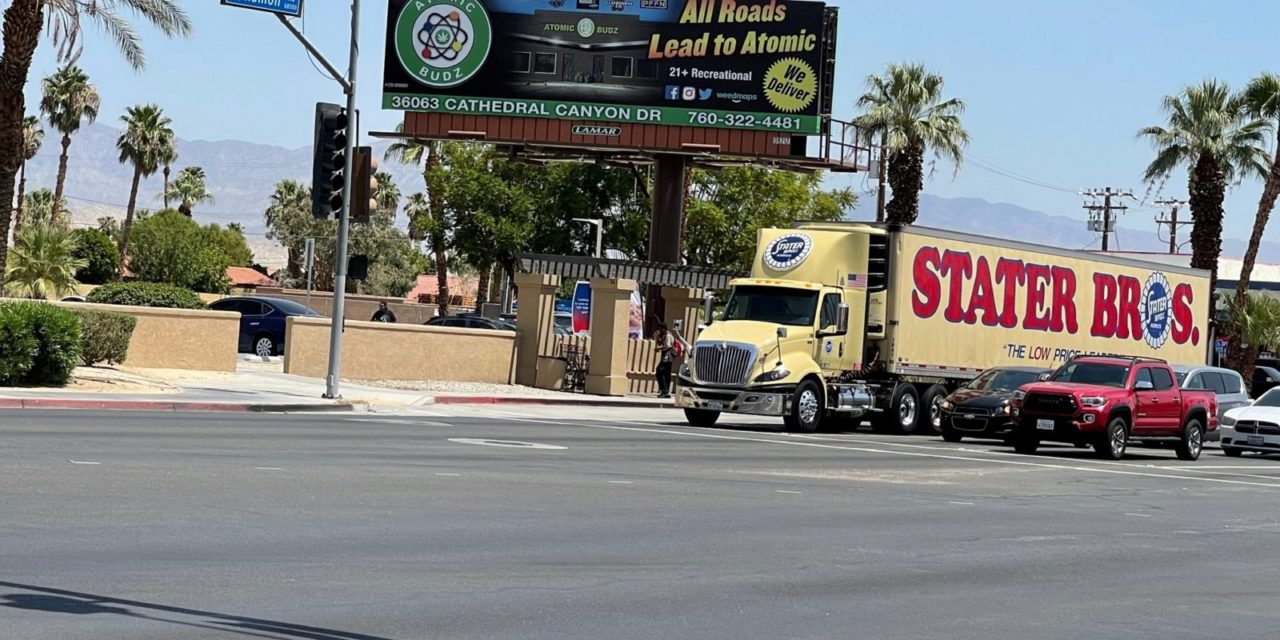City Council to hold study session on billboards in Cathedral City
CATHEDRAL CITY — The City Council this year set an aggressive set of goals that range from pressing “forward quicker and more boldly” to rehabilitate and improve recreational facilities that residents use to reducing the number of billboards in the city.
Cathedral City isn’t the first community to study reducing the number of billboards. San Jose banned new billboards in 1985,
However, earlier this year, the city council opted to continue moving forward with plans to erect smaller digital signs in the public right-of-way, such as on light poles and public restroom facilities, in the downtown core. The councilmembers also made it clear that they have no plans to block the construction of 22 new digital signs and free-standing billboards on city-owned sites, which the council separately approved more than two year ago, according to SiliconValley.com.
Historically, billboards are a popular means of advertising to the masses. Billboards are generally placed along highways or major traffic arterials to garner the greatest amount of attention for a specific product. These advertisements often contain witty slogans coupled with high impact graphics and bright colors, artfully designed to catch the eye of passers-by. Over the years, billboards have become more common place and the public has learned to rely on these advertisements as a
way of learning about goods available within the marketplace. Supergraphics and digital billboards (LEDs) are becoming the billboard of the modern century, these advertisements may span the height of an entire building or be a virtual mega plasma
television mounted on a building’s facade.

Billboard-on Dinah Shore
Billboards and other signs are protected by the First Amendment. However, billboards may be regulated and even banned by municipalities pursuant to their police power. Cities are able to implement reasonable zoning ordinances in the interest of public health, safety, aesthetics and maintenance of property values. Under Metromedia, Inc. v. City of San Diego, municipalities may prohibit all off-site billboards for aesthetic and safety reasons, so long as the city’s ordinance complies with the First Amendment. Cities constantly grapple to maintain a fine balance between the legitimate exercise of their police power and the First Amendment.
In accordance with Cathedral City’s Council Goal No. 6 under Planning, Streets and Infrastructure, it is recommended that the City Council provide feedback and direction to staff on methods to reduce, over time, the number of billboards in the City, including direction on whether to amend the City Code to state that new ones are not permitted.
The City’s police power includes the power to regulate the location of such advertisements, However, there are limitations on this power, according to a staff report that Erica Vega, assistant city attorney, prepared. The state has preempted the field of regulation with respect to billboards adjacent to interstates and primary highways. The city also does not have the power to regulate those located on tribal land. In addition, the prohibition on taking private property without just compensation limits the ability to require existing billboards to be removed.
Why attempt to regulate signs? Sign and billboard ordinances present a means by which a city may regulate traffic safety and prevent visual and urban blight.
Image Sources
- Billboard-on Dinah Shore: Cindy Uken
- Billboard on Ramon Road: Cindy Uken







